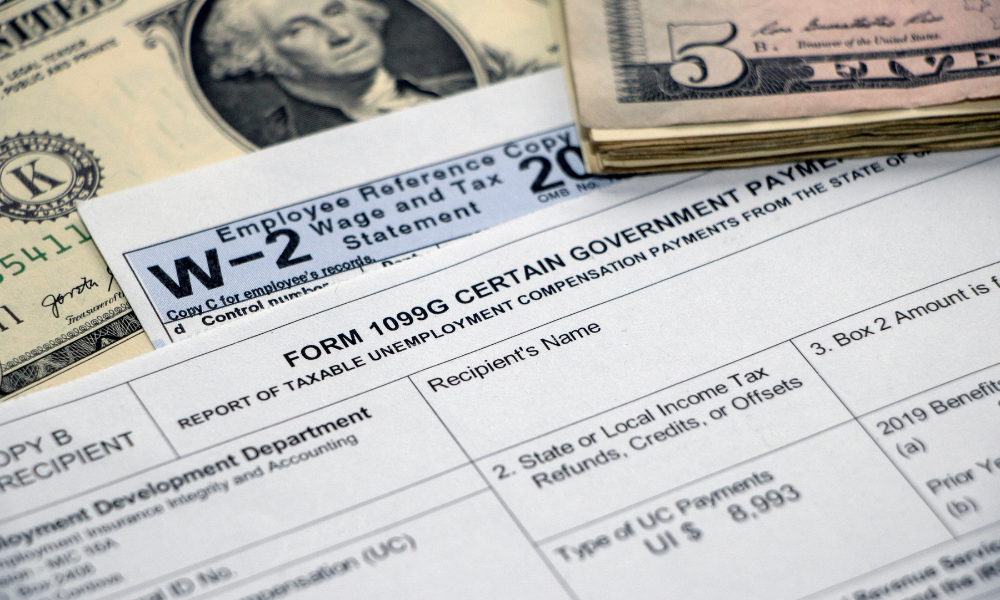1040, 1099, W-2, Schedule A-D, 1098. So many numbers, what do they mean?
Filing taxes comes as a stressor to many people, and not for no reason. The legal forms you’re given that look like they’re written in computer code can be confusing for anybody, not to mention if English isn’t your first language.
Across our social media channels the past few weeks, we have been talking in depth about employment law. Specifically, what the DOL’s Final Rule means for 1099 and W-2 workers. If you’ve been confused about what these two forms mean (or if you didn’t know they were referring to forms in the first place), we are here to help! Find out the answer to your burning question: what is the difference between a 1099 and a W-2 form?
1099 Form
In a nutshell, a 1099 form is used to report non-employment income to the Internal Revenue Service (IRS), whereas a W-2 is a record of an employee’s compensation, benefits, withheld taxes, and more.
This is an a lot of confusing words in one definition, so let’s break it down together.
First, non-employment income can be defined as any type of payment that comes from someone who classifies you as an independent contractor instead of an employee.
Due to the nature of an independent contracting relationship, (i.e. project-based work, control over pay rates, scheduling, hiring workers, as well as providing their own supplies), the company they work for does not usually provide benefits for them. So, unlike an employee, they don’t receive overtime pay, insurance, 401K matching, or any other benefits. Another benefit for W-2 employees is that their company will pay a portion of their taxes for them. Therefore, because independent contractors aren’t awarded the same benefits that employees are, the 1099 form reports how much money they made during the job, as well as the amount of taxes they are responsible for paying themselves.
W-2 Form
On the other hand, a W-2 form is for an employee that outlines how much total money they made and how much was taken out for taxes. Even if you didn’t work in one job for the entire year, you will still receive this form and it will outline the same things during that duration of your job.
The W-2 also shows how much of your taxes have been withheld. What are withheld taxes you ask? Essentially, it’s the amount of money your employer deducts from your wages in order to pay a portion of your taxes for you.
Let’s take a visual example. Imagine you calculate the gross (total) pay that you will receive based on your hourly rate and then when you see that money roll into your pocket, you’re surprised at how much less you actually received. Part of that difference is your employer taking an income tax in order to pay your taxes for you. So, the company withholds some of your paychecks so that you pay a smaller portion of your taxes than an independent contractor would.

The amount that is taken out by these withheld taxes depends on a number of things such as filing status (single, married, head of household), withholdings claimed on the W-4, as well as how much the employee earns (tax brackets). All of this goes into what is reported on the W-2.
So, to put all this information together, a 1099 form reports the money made by independent contractors and how many taxes they have to pay on their own accord. A W-2 form reports the wages earned by employees of a company and how much of their pay was withheld for taxes.
If you work for LGC as a temporary, temp to hire, or permanent worker, everyone receives a W-2 form no matter the type of employment completed. Every worker is an employee who is rewarded benefits and LGC pays a portion of your taxes for you. We hope this guide helped you understand the difference between these 2 forms in more depth!
About LGC
Since 2003 LGC has been building connections between businesses with staffing needs and job seekers looking for new opportunities. Our range of solutions includes temporary and permanent placements (and everything in between) for a variety of industries. With offices located nationwide, we can tap into a dynamic pool of talented professionals. We have a passion for creating partnerships that last and work hard every day to ensure both clients and candidates reach their employment goals.

